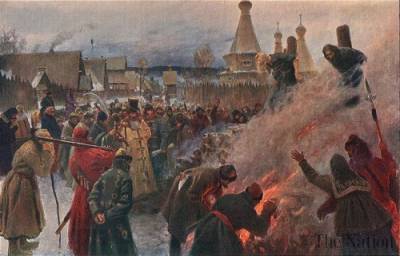The Dark Ages, Historical Time Period
Introduction
Dark Ages or Early Middle Ages is that historical time period of the Western Europe that came after the breakdown of the West Roman Empire in the fourth and fifth centuries. It over when the period of the Renaissance started in the 15th century. The western civilization adopted a number of its ideas and institutions from the unstable and unrestrained events of the Early Middle Ages. It won’t be incorrect to state that the culture in West actually experienced a revolution in the Middle Age. The most important reason why Middle Age can be considered progression in the humanities is that its effects influenced the world greatly. The significance of this specific time period “has been increasingly recognized as scholarship based on newly published source material, archaeological findings, and studies of demographics and migration patterns presents more accurate and detailed analyses of events and trends” (“Middle Ages,” 2013). Thus, the Dark Age is truly a glorious era as considerable advancement was made during this time and the world elevated to a new level of societal and cultural height.
Events that Led to the Advancement
Even though there were slow evolutions and accurate dates are not available so that the Middle Ages can be demarcated, a number of historians agree that the period started with the demise of the Theodosius I (Roman emperor) in 395 and ended the Visigoths conquered Rome in 410. In previous times, the whole period of the Middle Ages was regarded as being the Dark Age. However, now the Early Middle Ages is considered to be the Dark Ages i.e. from 450 to 750 (“Middle Ages,” 2013).
During this time period, there was no uniformity in the Medieval Europe. Though the region was very large geographically, it was divided into minor units that were diverse culturally and politically and no single authority had domination over them. With the Roman Empire’s disintegration, the civilization in Europe was left with Christianity as the standard. The secular authority was acquired by the papacy over time. As a consequence, monastic communities that followed the Rule of St. Benedict were able to preach and spread Latin civilization in the West, particularly in Germany (“Middle Ages,” 2013).
Climate of the Dark Age that led to Advancement
By the 8th century, Christianity had taken a central position and it encouraged the incorporation of Latin traditions in the society. Along with that, Germanic laws were also introduced in this time period. This fusion was very well illustrated in the remote empire that the Charlemagne created. On the other hand, the weak condition of the central authority of the empire broke down further when the Vikings and Magyars invaded a number of regions (“Middle Ages,” 2013). Thus, the Europe gave the look of a mess with the collapse of Rome. However, Ireland was not affected by the ongoing events. It remained a comparatively solid and organized society where monastic settlements were present instead of towns/cities. At the same time as Europe was tunneling in the Dark Age sludge, Ireland was illuminated by the light of civilization. In fact, it was due to the torch that was carried by Irish monks that Europe got its civilization back. It won’t be incorrect to mention that the Irish monks gifted Europe with the richly-illustrated manuscripts such as the Book of Kells etc. and these manuscripts may be considered as the most valuable art of Europe during Dark Age. The Irish landscape is also dotted with magnificently glorious round that silently remind the viewer of the Dark Age (Charles-Edwards, 2000).
Effects of Advancement on the World
During this period, Feudalism turned out to be the distinctive social and political structure in Europe with agriculture at its base. This modern framework further strengthened when Christianity was accepted by invaders in the 11th century resulting in an agricultural prosperity that not increased productivity in the region but also became a major factor in the expansion of population (“Middle Ages,” 2013).
With the coming of the High Middle Ages, the church was recognized as the universal institution that unified people. The Crusades expressed a strong militant religious enthusiasm and fanaticism that was largely due to the European strength that was increasing day by day. The intellectual life was stimulated by protection and affluence that was also supported by the church. The Arab culture was also introduced in Europe at the same time as Crusades made contacts with the Arabs. Due to this contact, Europe also got hold of the works of Greek authors that were being preserved by the Arabs. The Dark Age is also of particular importance as “philosophy, science, and mathematics from the Classical and Hellenistic periods were assimilated into the tenets of the Christian faith and the prevailing philosophy of scholasticism” (“Middle Ages,” 2013).
It was also in the Dark Ages that the Crusades enhanced the ultimate model of militant knighthood. The Knights Templars and the Knights Hospitalers that were the two monastic knighthood orders trained soldiers who pledged to maintain and defend the ideals introduced by Christianity. Feudalism gave birth to the ethical ideals’ system of chivalry that included major virtues of goodness, nobility, bravery, politeness, chastity and trustworthiness (Ridyard, 1999). The knights were expected to prove their chivalry not only in the battlefield but also in other tournaments. The Middle Ages had the Knights Code of Chivalry as a major part of its culture and everyone understood it.
Evolution of the Dark Age
The financial stability, centralization of politics and secularization foretold the transition of the world from a medieval period to modernism. Serfdom was made deteriorated by a money economy and the age of exploration was stimulated by the spirit of inquiry that Dark Age introduced in the society. The increasing monasteries were supported by the system of banking, secularized concepts and the bourgeois class as the towns grew and thrived. However, modernism and domestic conflicts weakened the position of churches and the state opposed a number of ideals that churches supported. With the sapping of feudalism, European nation-states emerged especially in England and France after the Wars of the Roses and 100 Years Wars (“Middle Ages,” 2013).
Historical research done by the scientists has been successful in the unveiling of numerous rich developments of the Middle Ages. The fields that were mainly affected by this period were that of technology, literature, philosophy, music and art. It was in the Dark Age that man made the wheeled plow, acquired the knowledge of scholasticism, made himself familiar with Latin and vernacular literature, came to know the Romanesque and Gothic art and was introduced to counterpoint. Politically, the Dark Age introduced the modern concepts of constitution and judiciary. Economically, the system of banking came to light. Educationally, the Dark Age gave birth to university education (Dawson, 2003).
Conclusion
Thus, the Dark Ages came to an end effectively in the mid 1400 when the Renaissance reached its glorious height. The European continent, without a doubt, suffered and experienced disastrous wars, severe famine and virulent diseases during the Dark Ages.
References
Charles-Edwards, T. M. (2000). Early Christian Ireland. Cambridge: Cambridge Univ. Press.
Dawson, C. (2003). The Making of Europe: An Introduction to the History of European Unity. London: The Catholic University of America Press.
Middle Ages from The Columbia Encyclopedia, 6th ed.. (n.d.). Questia. Retrieved September 11, 2013, from http://www.questia.com/read/1E1-MiddleAg/middle-ages
Ridyard, S. J. (1999). Chivalry, Knighthood, and War in the Middle Ages. Sewanee, Tenn.: Univ. of the South Press.

